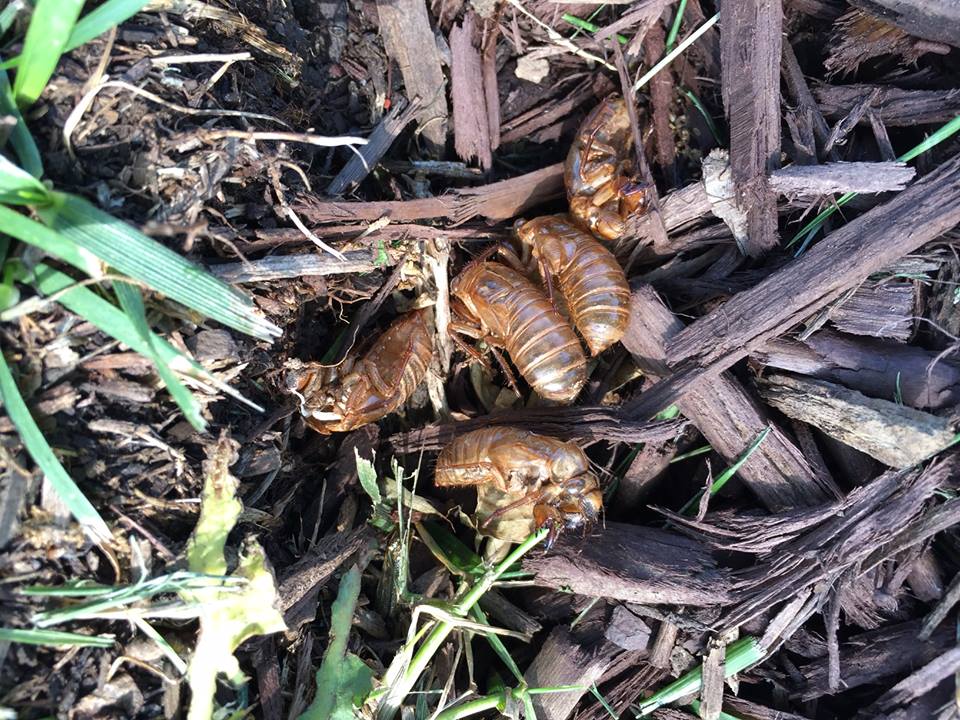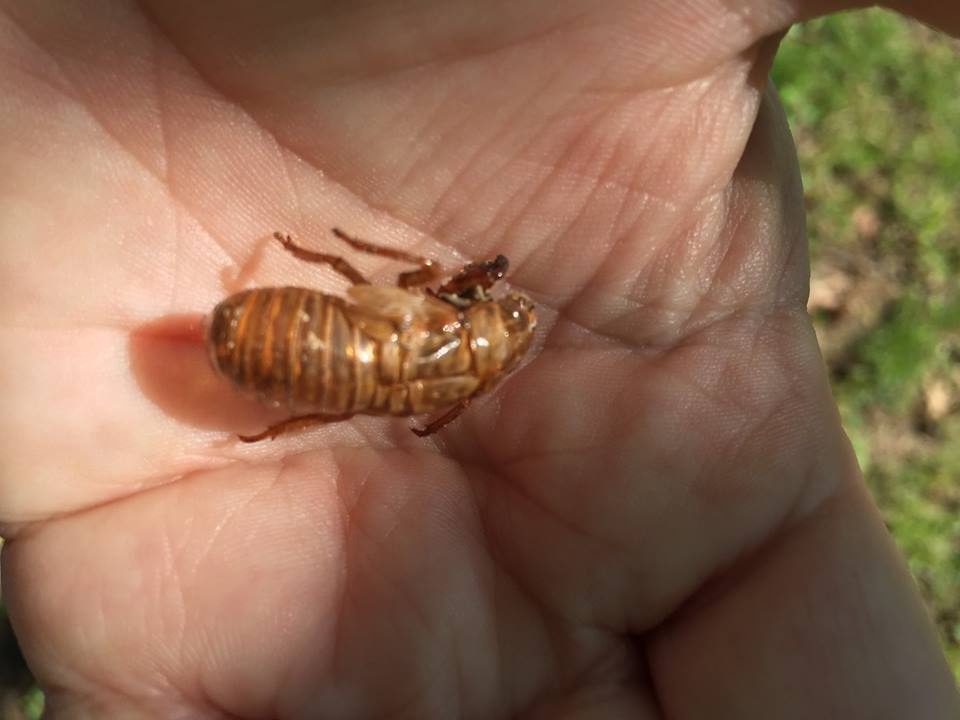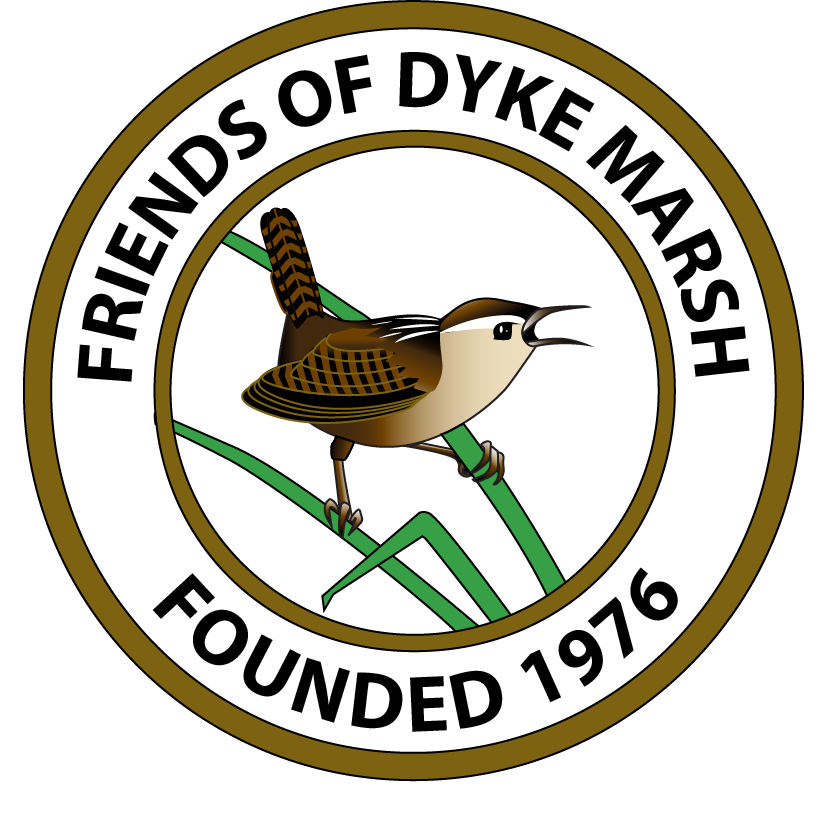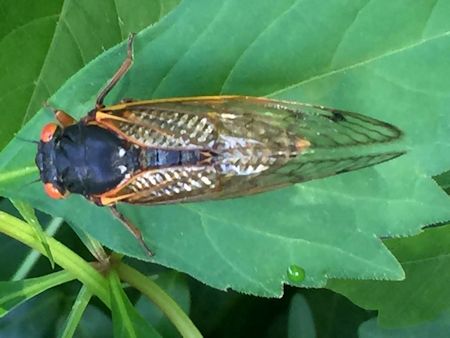On May 14, 2017, FODMers saw periodic cicadas, genus Magicicada, emerging in Dyke Marsh, moreso in west Dyke Marsh, but definitely on both sides of the George Washington Memorial Parkway.
Observers may see the insects’ shed nymphal skins at the base of trees. Unlike the cicadas that appear annually in Dyke Marsh (swamp, Robinson’s, Linne’s, scissor-grinder and others), the periodic cicadas appear much less frequently.
 Shed nymphal shells found at the base of a tree.For instance, after 13 or 17 years eating sap underground, the periodic cicadas in the eastern United States emerge from the ground en masse to mate, lay eggs and begin a new life cycle. That means that a person may only see or hear Magicicada up to four or five times in one’s lifetime.
Shed nymphal shells found at the base of a tree.For instance, after 13 or 17 years eating sap underground, the periodic cicadas in the eastern United States emerge from the ground en masse to mate, lay eggs and begin a new life cycle. That means that a person may only see or hear Magicicada up to four or five times in one’s lifetime.
“Stragglers” among periodic cicadas, however, appear prior (or sometimes later) than the rest of the brood they belong to. Among 17-year cicadas, stragglers are typically four years early. The large emergence of stragglers in the Washington, D.C., Virginia and Maryland area are Brood Xs, 17-year- periodic cicadas, that are four years early. Seeing and hearing stragglers increases your chances in life to experience periodic cicadas.
 Shed nymphal shellAs temperatures rise, males that have not been eaten will gather and sing in chorus to attract females. We'll try our best to record and share their songs.
Shed nymphal shellAs temperatures rise, males that have not been eaten will gather and sing in chorus to attract females. We'll try our best to record and share their songs.
Arlington naturalist Alonso Abugattas has posted an informative article about periodic cicadas on his blog, “Capital Naturalist”
Photos by Laura Sebastianelli.


